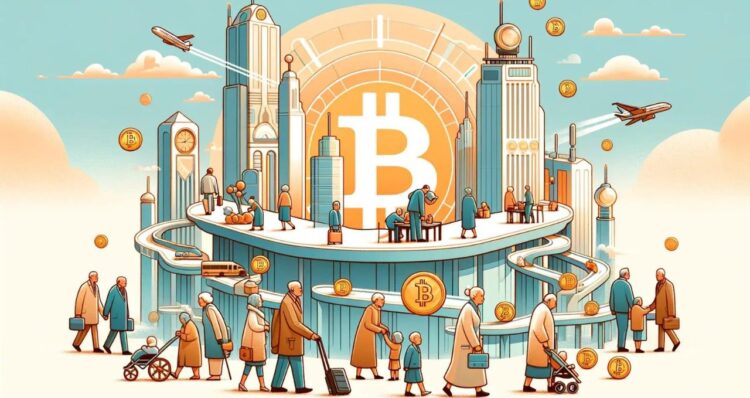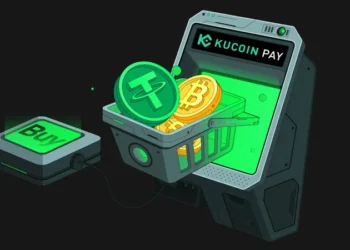Bitcoin is currently suffering from an identity crisis. Though initially conceived as a decentralized, peer-to-peer electronic cash system, the cryptocurrency has evolved to embody two distinct, sometimes conflicting identities: a store of value akin to “digital gold” and a revolutionary form of digital money for everyday transactions.
The duality of Bitcoin has significant implications for its market dynamics and will play a crucial role in shaping the future of the cryptocurrency. Based on the current state of the market, one of these aspects may play an out-size role in shaping its future. In this article, we try to ask why.
The HODL Culture
The concept of Bitcoin as a store of value has been largely driven by the internet meme culture built on this term: HODL (a misspelling of “HOLD” or could be simply interpreted to mean “Hold On for Dear Life”). It has become a cornerstone of the crypto community and birthed an investment strategy where individuals hold onto their Bitcoin for long-term appreciation rather than short-term gains. As Binance’s former CEO Changpeng Zhao aptly puts it, “If you can’t hold, you won’t be rich.”
Data from Glassnode’s HODL wave chart reveals that approximately 75% of all Bitcoin hasn’t moved in the past six months; that’s all of 2024 so far.

RELATED: Why 75% of Circulating Bitcoin Hasn’t Been Moved for Six Months
This behaviour mirrors that of traditional gold investors, who view their holdings as a hedge against inflation and economic uncertainty. In fact, MicroStrategy’s CEO, Michael Saylor, has argued that Bitcoin has “all the great attributes & none of the defects” of gold. According to him, Bitcoin would surpass gold in value in the near future.
Institutional adoption has further cemented Bitcoin’s status as digital gold. Many companies have started to follow in MicroStrategy’s footsteps and made significant investments in Bitcoin as part of their financial strategy. For instance, Japanese investment firm Metaplanet began an aggressive purchase campaign in May 2024 to safeguard its assets from the impact of the weakening local currency. Since then, it has brought its holdings to 360,368 BTC as of August 2024.
Even nations are beginning to recognize Bitcoin’s potential as a store of value. El Salvador’s adoption of Bitcoin as legal tender in 2021 set a precedent, with other countries now considering adding Bitcoin to their national reserves. Senator Cynthia Lummis recently proposed that the U.S. government consider acquiring the cryptocurrency to address its financial woes.
RELATED: The Proposed US Bitcoin Reserve Bill Might Be a Disaster in the Making
Is Bitcoin Straying from Satoshi’s Vision of Digital Money?
While Bitcoin’s role as a store of value has gained prominence, its original purpose as a decentralized digital currency remains relevant. Satoshi Nakamoto’s vision, as outlined in the Bitcoin whitepaper, was to create a peer-to-peer electronic cash system that would enable instant, borderless transactions without relying on intermediaries.
In 2024, Bitcoin’s acceptance as a form of payment is growing. An increasing number of businesses, from small online retailers to large corporations like Norwegian Air, Virgin Galactic, and Overstock, now accept Bitcoin.
Technological advancements, particularly the Lightning Network, have enhanced Bitcoin’s viability for everyday transactions. This layer-2 solution enables fast, low-cost payments that were almost impossible with the foundational blockchain structure. As of mid-2024, the network has over 13,000 active nodes and a total network capacity exceeding 5,000 BTC.
In countries like El Salvador, Bitcoin is already being used for daily transactions. The government’s Chivo wallet, which supports Bitcoin transactions, reported over 4 million users by 2024. In Africa, platforms like BitPesa and Paxful leverage Bitcoin to provide alternatives to traditional banking systems.
Balancing Value and Utility: Market Implications
The impact of using Bitcoin as a medium of exchange is pale in comparison to that of the HODL culture. The HODL culture has undeniably contributed to Bitcoin’s growing market value, which has exceeded $1 trillion in 2024 so far. By reducing the circulating supply of Bitcoin, long-term holders have helped stabilize the market and mitigate extreme price volatility. This stability has attracted institutional investors and bolstered Bitcoin’s reputation as a store of value.

However, this strategy does come with certain drawbacks. Critics argue that this focus on holding rather than using Bitcoin for its intended purposes could be detrimental to its overall stability and value.
Firstly, widespread HODLing leads to reduced market liquidity, making it more difficult for new users to acquire Bitcoin and limiting its usefulness as a medium of exchange. Thus, this HODL mentality could slow down the adoption of Bitcoin as a practical currency for everyday transactions, as individuals choose to hold onto their holdings rather than spend them.
Additionally, while HODLing can reduce day-to-day price volatility, it may contribute to larger and more dramatic price swings when long-term holders decide to sell in large numbers. This unpredictability can have significant effects on the market and overall confidence in the cryptocurrency.
Lastly, the HODL culture may lead to an increased concentration of wealth among early adopters, potentially conflicting with Bitcoin’s original egalitarian ideals, and could contribute to forming speculative bubbles.
On the other hand, Bitcoin’s adoption as a medium of exchange enhances its liquidity and real-world utility. As more businesses accept Bitcoin and daily transactions rise, the market may experience more stable prices and consistent trading activity. Technologies like the Lightning Network, which improves transaction speed and reduces costs, play a crucial role in this evolution.
The challenge lies in finding the right balance between these two aspects of Bitcoin’s identity. While the HODL culture provides a foundation for Bitcoin’s value proposition, its use as digital money is essential for long-term sustainability and mainstream adoption.
In conclusion, the Bitcoin HODL culture and its use as digital money are not mutually exclusive. Instead, they represent different facets of its growing role in the global financial ecosystem. So, the key to Bitcoin’s long-term success may well lie in embracing both aspects of its identity.
Disclaimer: This article is intended solely for informational purposes and should not be considered trading or investment advice. Nothing herein should be construed as financial, legal, or tax advice. Trading or investing in cryptocurrencies carries a considerable risk of financial loss. Always conduct due diligence.
If you would like to read more market analyses like this, visit DeFi Planet and follow us on Twitter, LinkedIn, Facebook, Instagram, and CoinMarketCap Community.
Take control of your crypto portfolio with MARKETS PRO, DeFi Planet’s suite of analytics tools.”





















